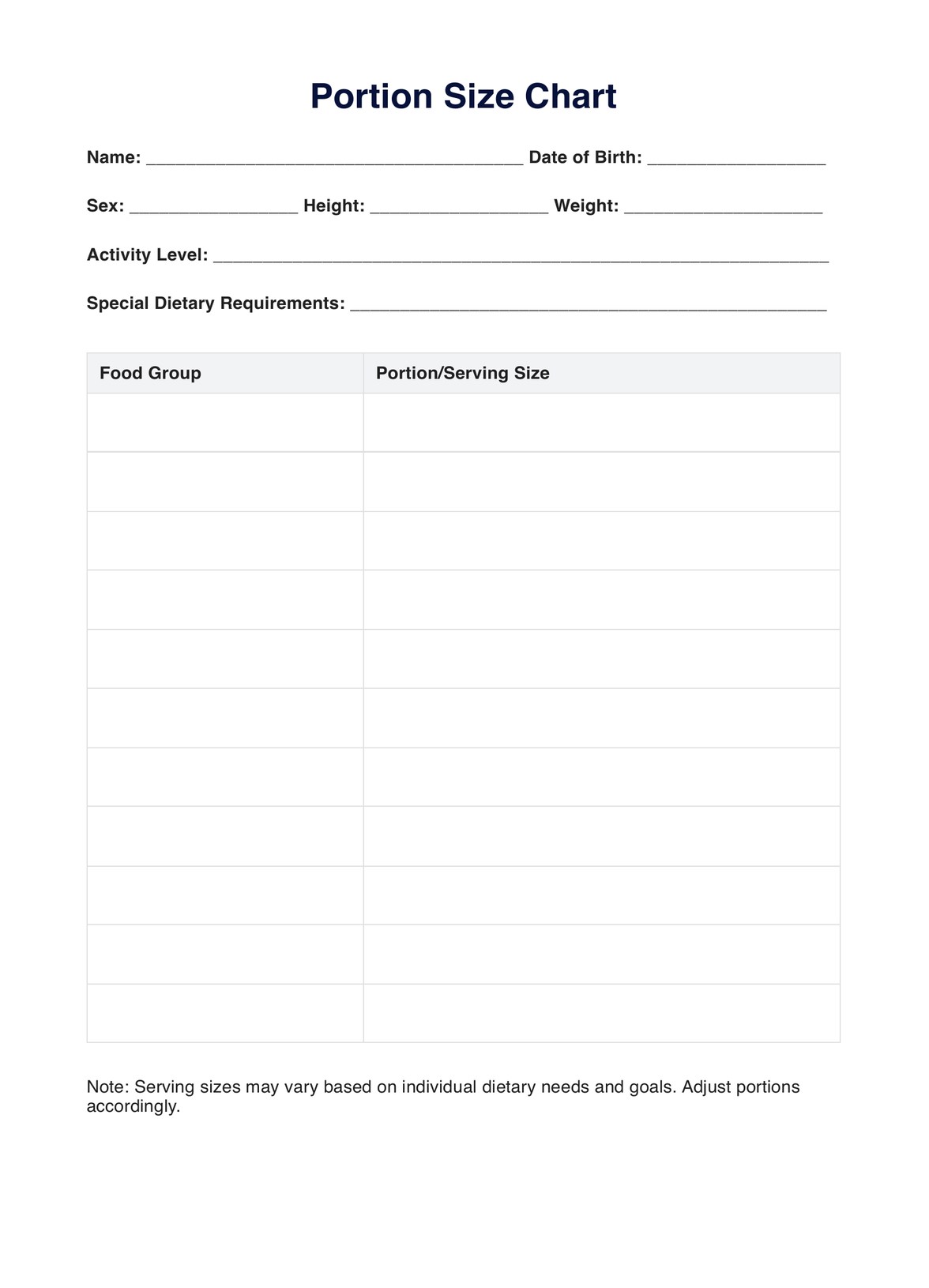Individuals seeking to manage their food intake effectively and promote healthier eating habits utilize Portion Size Charts.

Portion Size Chart
Manage food intake effectively with our Portion Size Chart. Find the right serving sizes, minimize waste, and achieve nutritional goals easily.
Use Template
Portion Size Chart Template
Commonly asked questions
Use a Portion Size Chart when planning meals, cooking, or eating out to ensure appropriate portions and balanced nutrition.
Utilize the Portion Size Chart to ensure balanced nutrition, manage portion control effectively, and minimize food waste for overall wellness.
EHR and practice management software
Get started for free
*No credit card required
Free
$0/usd
Unlimited clients
Telehealth
1GB of storage
Client portal text
Automated billing and online payments











